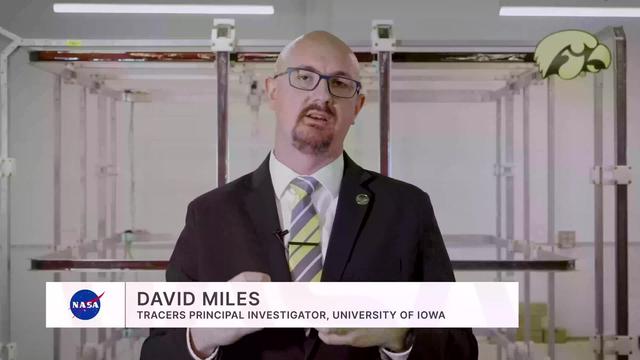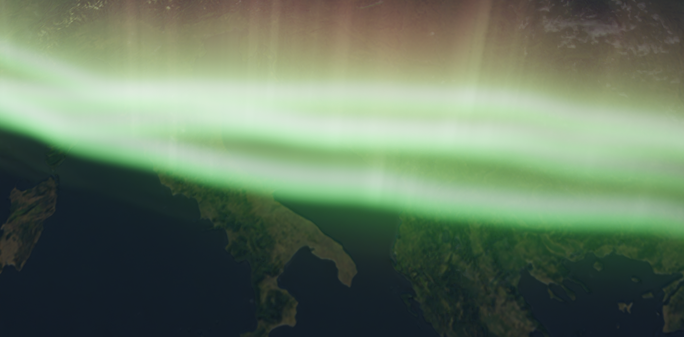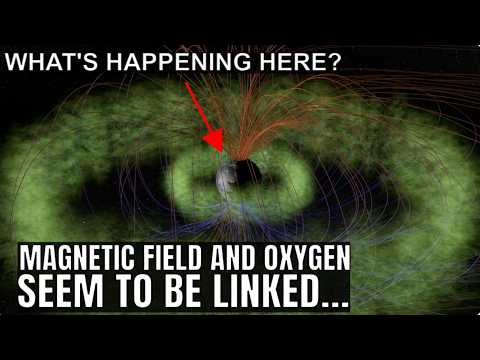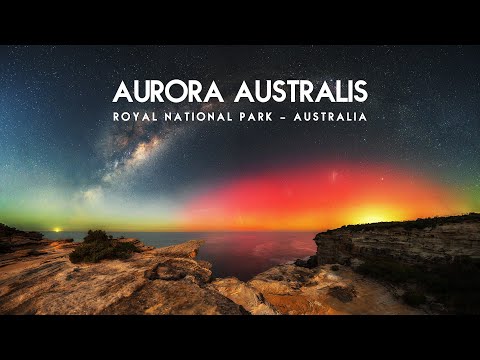#magnetosphere
NASA’s TRACERS Mission Launches to Study Earth’s Magnetic Shield
#Heliophysics #Launch #MagneticFields #MagneticReconnection #Magnetosphere #Plasma #PolarCusp #Satellite
1 new picture and 1 new video from NASA (SVS) https://commons.wikimedia.org/wiki/Special:ListFiles?limit=9&user=OptimusPrimeBot&ilshowall=1&offset=20250726125759
Weird space weather seems to have influenced human behavior on Earth 41,000 years ago https://theconversation.com/weird-space-weather-seems-to-have-influenced-human-behavior-on-earth-41-000-years-ago-our-unusual-scientific-collaboration-explores-how-257216
In response, people may have adopted practical measures: spending more time in caves, producing tailored clothing for better coverage, or applying mineral pigment “sunscreen” made of ochre to their skin.
STORIE Fit Test at NASA Goddard Space Flight Center
#ColumbusModule #GeomagneticStorm #Heliophysics #ISS #Integration #InternationalSpaceStation #Lab #Magnetosphere
1 new picture and 1 new video from NASA (SVS) https://commons.wikimedia.org/wiki/Special:ListFiles?limit=17&user=OptimusPrimeBot&ilshowall=1&offset=20250719125828
NASA’s TRACERS Studies Magnetic Explosions Above Earth
#Earth #Heliophysics #MagneticFields #MagneticReconnection #Magnetosphere #Plasma #PolarCusp #Satellite
1 new video from NASA (SVS) https://commons.wikimedia.org/wiki/File:NASA%E2%80%99s_TRACERS_Studies_Magnetic_Explosions_Above_Earth_%28SVS14862%29.webm

Weird space weather seems to have influenced human behavior on Earth 41,000 years ago – our unusual scientific collaboration explores how

Juno détecte un type inédit d’onde plasma près des pôles de Jupiter, mix d’Alfvén et de Langmuir : la magnétosphère révèle ses secrets !
https://issues.fr/les-astronomes-ont-trouve-un-tout-nouveau-type-donde-de-plasma-pres-de-jupiter/
#Space #Science #Innovation
#Astrophysics #PlasmaPhysics #Magnetosphere
#NewPlasmaWave #JunoDiscovery #JupiterEmerging
NASA Scientists Find Ties Between Earth's Oxygen and Magnetic Field
https://science.nasa.gov/earth/earth-oxygen-magnetic-field-linked/
#ycombinator #Earth #Exoplanet_Atmosphere #Goddard_Space_Flight_Center #Magnetosphere #Planetary_Environments_Atmospheres #Science_Research
Mysterious Strong Link Between Earth's Magnetosphere and Oxygen Levels
#AntonPetrov #WeijiaKuang #RaviKopparapu #JoshuaKrissansenTotton #BenjaminMills
#Science #Math #Maths #Physics #Earth #Magnetosphere #Oxygen
https://www.youtube.com/watch?v=L2gf_zaz-1E
Aurora Australis from Royal National Park! This is AMAZING.
The big solar storm that is passing us this week, triggered nu a coronal mass ejection from the Sun has produced a class G4 / G5 geomagnetic storm.
Our magnetosphere deflects most of the particles from Sun away, but near the poles, some spiral down and excite our atmosphere - producing aurora.
This storm was powerful enough to generate aurora sightings as far north as Coonabarabran and the Siding Spring Observatory. That's around 340 km NW of Sydney (closer to the equator, at 31 degrees south!)
While city lights drowned out the view for many, those under darker skies were treated to an extraordinary show. This stunning timelapse footage, captured by my friend Filippo Rivetti from Royal National Park south of Sydney, offers a glimpse of the awe-inspiring beauty and planetary-scale force of this event.
A reminder of the vast, dynamic forces at play: a star lashing out across space, and a planet, our home planet with its protective magnetic shield - hosting the only life we know of so far in the Universe, safely within.
What NASA Is Learning from the Biggest Geomagnetic Storm in 20 Years https://science.nasa.gov/science-research/heliophysics/what-nasa-is-learning-from-the-biggest-geomagnetic-storm-in-20-years/ #NASA #Auroras #CuriosityRover #EarthSMagneticField #GoddardSpaceFlightCenter #GOLDGlobalScaleObservationsOfTheLimbAndDisk #Heliophysics #HeliophysicsDivision #Magnetosphere #MagnetosphericMultiscaleMMS #MarsOdyssey #MAVENMarsAtmosphereAndVolatileEvolutioN
TRACERS Thermal Vacuum Testing at Millennium Space Systems
#Heliophysics #MagneticFields #MagneticReconnection #Magnetosphere #Plasma #PolarCusp #Satellite #SolarStorm
3 new pictures and 2 new videos from NASA (SVS) https://commons.wikimedia.org/wiki/Special:ListFiles?limit=18&user=OptimusPrimeBot&ilshowall=1&offset=20250426125634
TRACERS Testing & Integration at Millennium Space Systems
#DarkEnergy #DarkMatter #Exoplanet #Heliophysics #Infographic #MagneticFields #MagneticReconnection #Magnetosphere
4 new pictures and 2 new videos from NASA (SVS) https://commons.wikimedia.org/wiki/Special:ListFiles?limit=26&user=OptimusPrimeBot&ilshowall=1&offset=20250425130112
Huge #aurora alert!!
Right now aurorae could be visible as south as Germany & France!
Strong overhead aurorae right now for the nordics!
IMAP Testing and Integration at NASA's Goddard Space Flight Center
#CoronalMassEjections #EarthScience #Heliophysics #Hyperwall #Magnetosphere #Mars #Planets #SolarActivity
2 new pictures and 2 new videos from NASA (SVS) https://commons.wikimedia.org/wiki/Special:ListFiles?limit=17&user=OptimusPrimeBot&ilshowall=1&offset=20250410125655
NASA’s Record-Shattering, Theory-Breaking MMS Mission Turns 10 https://science.nasa.gov/science-research/heliophysics/mms-mission-turns-10/ #NASA #AmesResearchCenter #AmesResearchCenterSScienceDirectorate #EarthSMagneticField #GoddardSpaceFlightCenter #Heliophysics #Magnetosphere #MagnetosphericMultiscaleMMS #ScienceResearch #TheSun
NASA’s Record-Shattering, Theory-Breaking MMS Mission Turns 10 https://science.nasa.gov/science-research/heliophysics/mms-mission-turns-10/ #NASA #EarthSMagneticField #GoddardSpaceFlightCenter #Heliophysics #Magnetosphere #MagnetosphericMultiscaleMMS #ScienceResearch #TheSun
The planets can be observed not only in visible light but also in the radio range! The first attempts at radio observations of planets began in 1954 when intense radio bursts from Jupiter were detected. This radiation did not come directly from the planet but from processes in its magnetosphere.
#FunFact: Jupiter's magnetic field is massive, even relative to the size of the planet itself – it extends over 650 million kilometers (to the orbit of Saturn!) and is 4000 times stronger than Earth's magnetic field. A pulsar's magnetic field, however, can be up to 100 trillion times stronger than Jupiter's!
Radio waves penetrate deep into planet atmospheres or the surface, providing us with information that cannot be obtained through other methods. For example, phase fluctuations in the radio emissions were detected on the Moon and Mercury. On Mars, high electrical conductivity in the soil due to iron oxides was detected.
#funfact Radio astronomy amateurs assure that Jupiter can also be "received" and "heard" at home. All you need is a radio receiver for radio waves in the 18 to 22 MHz range and an antenna specifically designed for this frequency range.
Chirping [chorus] waves detected in baffling location near Earth —Scientists are stumped…
https://www.livescience.com/space/potentially-deadly-chirping-waves-detected-in-baffling-location-near-earth-and-scientists-are-stumped
To better study the waves and what could be producing them, researchers have suggested better monitoring of incoming #plasma belches from the sun and how they interact with Earth's #magnetosphere. This could lead to answers that may prove vital for ensuring that future satellites, astronauts and deep #space missions to #Mars and beyond aren't fatally struck by high-speed electrons.


 Hacker News
Hacker News 
